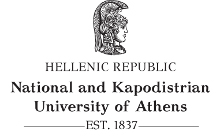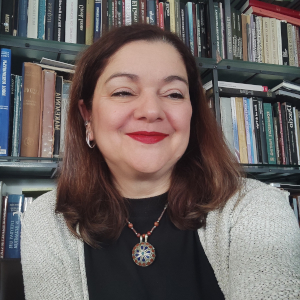Asisstant Professor of Byzantine Archaeology
email
Anastasia Drandaki was trained at the National and Kapodistrian University of Athens (NKUA) as an archaeologist and art historian (BA and PhD) and at the University of Westminster, London, where she attended intensive courses in computing while designing a documentation system for the Benaki Museum Byzantine Collection. She was a 2013-2014 member of the Institute for Advanced Study in Princeton, NJ. In 2018, she joined the Department of History and Archaeology of the NKUA after many years of service as Curator of the Byzantine Collection at the Benaki Museum.
She have curated or co-curated and edited the catalogues of acclaimed Byzantine exhibitions in Greece, Europe, and the USA, including Pilgrimage to Sinai. Treasures from the Monastery of Saint Catherine (2004: Benaki Museum); Images de la spiritualité grecque. Icônes de la collection Rena Andreadis (2004: Geneva–Musée d’art et d’ histoire); The Origins of El Greco (2009–2010: New York–Onassis Cultural Centre); Heaven and Earth. Art of Byzantium from Greek Collections (2013–2015: National Gallery of Art–Washington DC, J.P. Getty Villa, the Art Institute of Chicago); Routes of icons, 17th-19th century (2023: Benaki Museum).
Her publications focus on Science and Technology in Archaeology and Museums; Late Antique and Medieval Metalwork; Art and Material Culture in Late Antique and Medieval Mediterranean; the Art and Cult of Icons; Pilgrimage; the arts of Sinai; the History of Byzantine Collections. In her first book (Greek Icons 14th-18thcentury. The Rena Andreadis Collection, Milan: SKIRA and Benaki Museum, 2002.) she studied seventy-one icons most of them previously unpublished. Recently, she authored the first comprehensive monograph on Late Antique copperwares, in which she make extensive use of chemical analyses to better understand the technology of the artworks and the diversity of technical solutions employed by coppersmiths during that transitional period (Late Antique Metalware. The production of copper alloy vessels in the fourth to eighth centuries – The Benaki Museum collection and related material, Turnhout 2020: Brepols). Her latest book, on a newly discovered early Palaiologan Epitaphios, a sumptuous fourteenth-century ecclesiastical gold embroidery, is now in print (The Valadoros Epitaphios at the Benaki Museum: Art, Technique, and Technology of a Byzantine Gold Embroidery. Greek and English editions, Athens: Benaki Museum Journal Supplement no. 13).
Since 2019, she participate in the five-year EU funded research programme ERC RICONTRANS: Visual Culture, Piety and Propaganda: Transfer and reception of Russian Religious Art in the Balkans and the Eastern Mediterranean (16th-early 16th century), as Head Researcher on behalf of the Second Beneficiary of the project, the Benaki Museum. She is member of the Scientific Expert Panel of the Science and Technology in Archaeology Research Center (STARC) and the APAC Labs in The Cyprus Institute, Nicosia. Since 2021, she serve as Vice-president in the Board of the Christian Archaeological Society, the Society of Greek Byzantinists, responsible for the publication of one of the oldest international academic journals on Byzantine Studies, the Deltion (https://ejournals.epublishing.ekt.gr/index.php/deltion).

